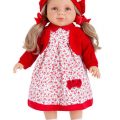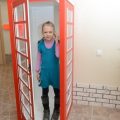Tasks and goals of aesthetic education
A true aesthete has the ability to seebeauty in all manifestations of life, to evaluate, analyze and have personal ideas about beauty. From the first years of life, the baby is drawn to everything bright, colorful and attractive, but this happens unconsciously. A little later, the child begins to receive bright and joyful feelings from the slightest contact with the beautiful. Aesthetic education of preschool children should be carried out by parentsPhoto: Getty Parents, educators and teachers should strive to:
Aesthetic education of preschool children should be carried out by parentsPhoto: Getty Parents, educators and teachers should strive to:
- to form a harmonious personality;
- develop the ability to see and appreciate beauty in the baby;
- encourage and develop creative abilities;
- promote the emergence of aesthetic tastes and ideals.
Subsequently, on these foundations, a person’s inner wealth is formed.
Features of aesthetic development in the family
The most effective way is personal examplefather, mother, caregiver, teacher or any adult with whom the child communicates closely. The appearance, character traits, behavior and communication style of such a person leave a large imprint on the child's personality and form the basis of his aesthetic perception. Family education of a little aesthete consists of several aspects:
- an atmosphere of respect and love between family members;
- discipline, neat clothes;
- upbringing musical taste;
- reading books, learning poems;
- drawing using different techniques;
- entertaining and interesting conversations at an affordable level for the child;
- the design of living rooms and children's room, the harmony of colors, order and cleanliness.
From the first years of life, such an environment in the family develops a sense of beauty in the child.
Methods of aesthetic education in the garden
In preschool institutions, educators conductchildren's conversations, morning performances, evenings, excursions and various activities. Visiting exhibitions, theaters and museums also plays an important role. It is important to encourage amateur artistic activity. For this purpose, you can conduct creativity lessons, where each child has the opportunity to complete a task, guided exclusively by their own concepts and ideas. Aesthetic education is a long process that begins at birth and continues until the end of a person's life.









